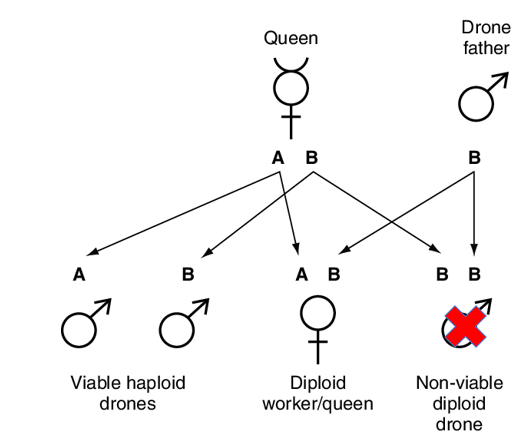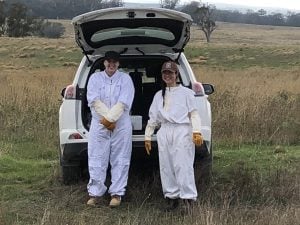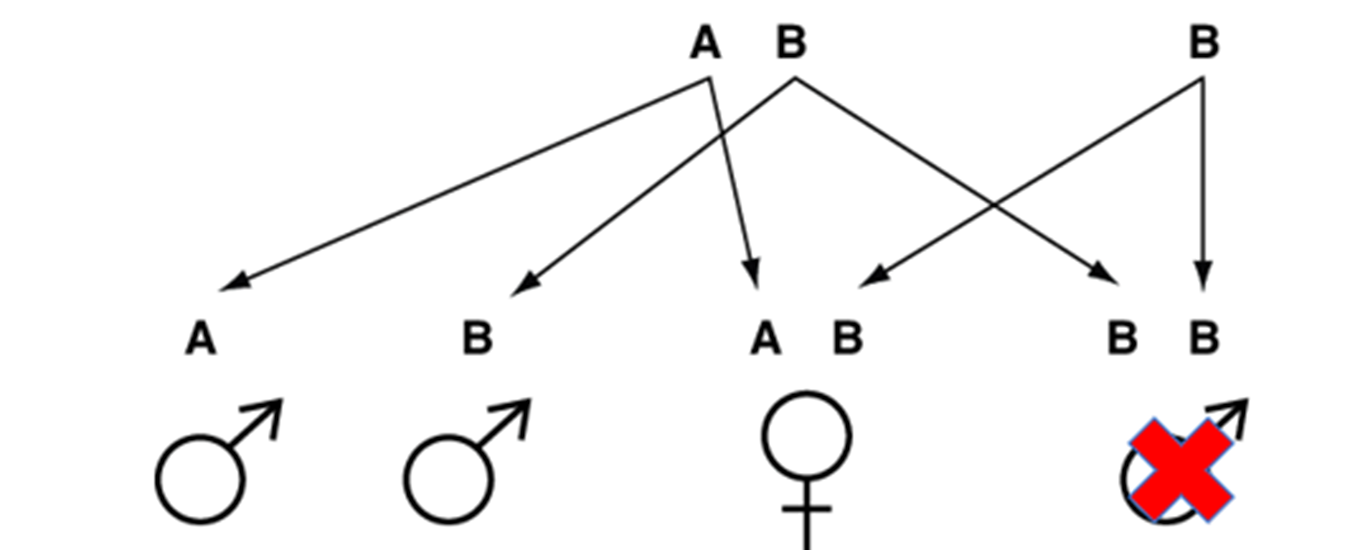What is the complementary sex determiner and why does it matter?
Sex in honey bees is determined by a gene named the complementary sex determiner (csd). Unfertilised eggs emerge to become drones, whilst fertilised eggs become queen and worker bees. Like other genes, csd has numerous alleles. Alleles are different variations of the same gene.
A queen bee has two chromosomes, each carrying a different csd allele. As drones emerge from unfertilised eggs, they only carry one csd allele from their queen mother. Worker bees will carry one of their queen mother’s allele and a different allele from their drone father.
With this system, it is possible that some fertilised eggs end up with the same csd allele from both their parents, becoming abnormal drones. Experimental studies from the 1950s have shown that these abnormal drones are killed during development and as such, if a large amount of fertilised eggs develop into non-viable drones, it can severely decrease population growth and result in unproductive colonies.

Honeybee sex determining system. A and B are different alleles (forms) of the same gene.
It is important that all honey bee populations maintain a high number of csd alleles to decrease the chance of a queen meeting a drone with the same allele copy as itself. A decrease in csd alleles can happen for several reasons, for instance in a closed breeding population if the queens are produced from a small number of colonies. Another reason is the rapid decrease of colony population size in a short period of time due to diseases or bushfires.
csd diversity in honey bee populations have been investigated around the world, but this had yet to be done in Australia until recently through the Plan Bee program.
csd in Australia
The diversity of csd has been tested in two Australian honey bee populations, 56 colonies from Better Bees WA (BBWA) and 41 colonies from a NSW queen bee breeder. Our results show that BBWA had 28 different csd alleles, while NSW had 32. In total, we found 51 alleles, 12 that had not been previously reported worldwide. 9 alleles were found in both populations. As of 2021, there were 225 alleles worldwide.
Through comparing our results with those found in other breeding programs internationally such as Varroa Sensitive Hygiene (VSH), Russian Honey Bee (USA) and SmartBees (Europe), Australia’s csd diversity is comparable. Given the New Zealand breeding program have been maintained successfully with as few as 16 csd alleles, Australia’s csd diversity shows great promise.
This means that with the two populations tested, it can be inferred that low csd diversity is not currently a problem in Australia.
What next?

Erica Mo, University of Sydney and assistant Emilie Kelly carrying out research on bees
Whilst csd diversity may not currently be an issue, it is important to continue to track this over time. Plan Bee will be doing this in the breeding stock at Tocal Agricultural college.
Australia’s national honey bee genetic improvement program, Plan Bee, is taking an active role in measuring our national diversity. Australian queen bee breeders interested in having their genetically tested, can contact Nadine Chapman ([email protected]).
Acknowledgements:
- Plan Bee (National Honey Bee Genetic Improvement Program) is supported by funding from the Australian Government Department of Agriculture, Water and the Environment as part of its Rural Research and Development for Profit program. The project is further supported by AgriFutures Australia, the Department of Regional NSW, University of Sydney, University of New England Animal Genetics and Breeding Unit, Better Bees WA Inc, Wheen Bee Foundation, Costa Group, Olam, Beechworth Honey, Monson’s Honey and Pollination, South Pacific Seeds, Australian Queen Bee Breeders Association, Australian Honey Bee Industry Council, and commercial beekeepers.
- This article was peer-reviewed by Corinne Jordan and Nadine Chapman.


